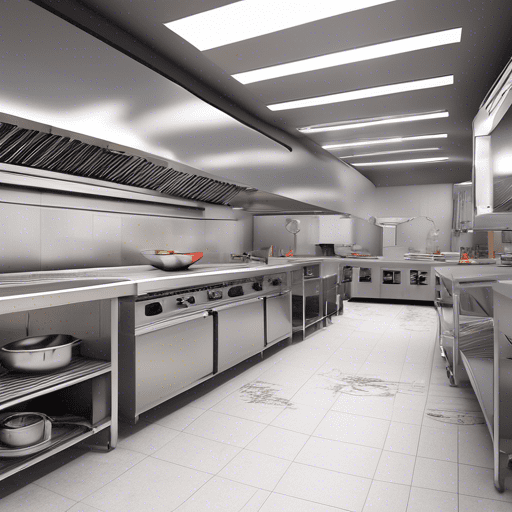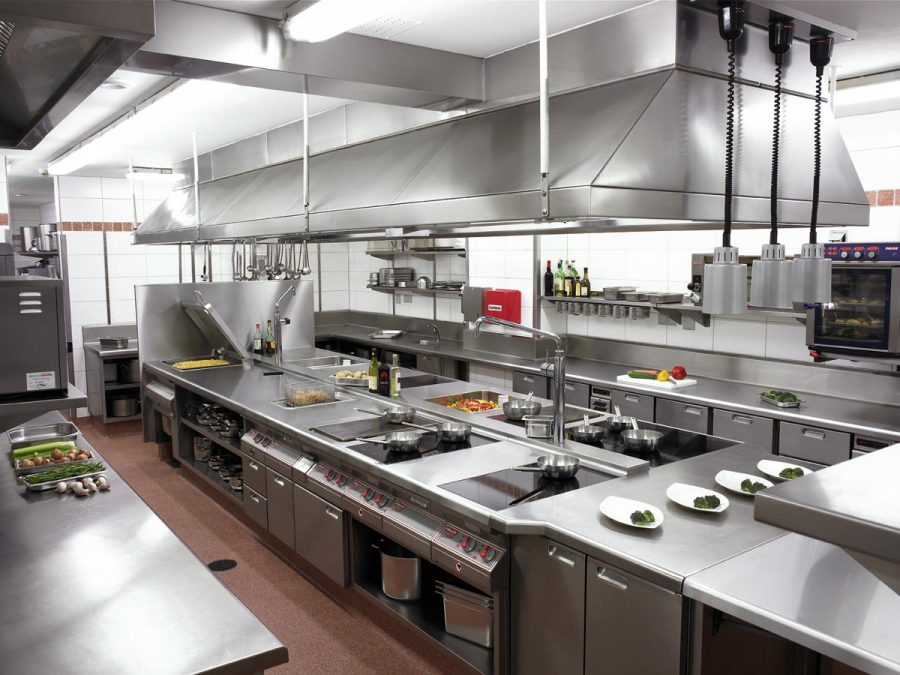With advancements in technology and the growing demand for sustainable and energy-efficient solutions, the field of MEP (Mechanical, Electrical, and

Several factors come into play when you’re designing or renovating commercial kitchens and restaurants. Besides, the type of dining space may range from high-end restaurants and coffee shops to cafeterias in a healthcare facility. Each of these spaces has its own set of benefits and challenges.
However, regardless of the type of foodservice facility, proper ventilation, lighting, controls, and occupant comfort are all essential for successful operation. That’s where restaurant MEP design comes in!
Today, commercial kitchens and restaurants often need complex, sustainable MEP design systems. Luckily, following the simple guidelines below can help you to reduce costs, save energy and install easily-to-maintain systems. In addition, they’ll ensure that your establishment meets the restaurant MEP design meets code & regulation compliances while helping you accomplish your ultimate MEP design goals.

Mechanical engineering for commercial kitchen
Restaurant HVAC design includes general Heating, Ventilation & Air Conditioning systems for the facility. According to ASHRAE, species with high occupancy like restaurants should have adequate outdoor or treated air. While air from the washrooms should be exhausted. Also, the commercial kitchen HVAC design may include Heat or Energy Recovery ventilators to effectively recoup the heat/ energy that would otherwise go to waste.
Most commercial kitchens have grease-laden vapors that should be exhausted since they’re vulnerable to catching fire. For that reason, they should be exhausted using special exhaust hoods guided by NFPA 96. If there is a lot of air that needs to be exhausted, the commercial kitchen ventilation system will need a make-up air system.
This outdoor/ make-up air has to be treated, especially in colder climates. There are several ways to accomplish that. A smart way is to control the exhausted air and the corresponding make-up air using demand ventilation to control the amount of indoor air with heat sensors.
Selecting the right make-up air and commercial kitchen exhaust system will have a significant impact on your restaurant’s energy consumption. Specifically, the energy costs of these systems can take up to 50 percent of the total HVAC load. To handle this challenge effectively, the design team and MEP engineers should work together to determine the right location and size of make-up units and exhaust hoods.
Occupancy comfort is one of the most important factors you need to consider when creating a restaurant MEP design. Dining space occupancy tends to fluctuate between the time allotted to cleaning and kitchen staff preparation and dining hours. Therefore, incorporating occupancy-based demand ventilation and coordinating humidity and temperature controls can help to minimize energy ventilation. Moreover, it will ensure that the restaurant maintains proper humidity levels and temperatures throughout the day.
Electrical systems for commercial kitchen MEP design
Power layout, lighting layout, and fire alarm layout for commercial kitchens and restaurants are designed by an electrical engineer. While the mechanical engineer coordinates the interlocking of fans, automation, equipment violates, and power to any control.
In electrical design, selecting the right lighting layout and fixtures for dining spaces can be a bit challenging, especially due to the different functional needs within the kitchen and dining spaces. Downlighting can benefit both the dining staff and patrons by acting as ambient lighting and task lighting. Moreover, LED fixtures with minimal output can effectively deliver results that are both decorative and functional. On the contrary, specialty lights and pendant lights create a more intimate environment within the dining facility.
Restaurant MEP design may also include technically sophisticated but easy-to-use controls that can be implemented using wireless handheld remotes and touch screen panels. This will allow the staff to set the ambient environment and functionality based on the occasion, need, and season.
Calculating the required luminances of the dining spaces helps the lighting control designed to determine the proper automation level for the lighting control system.
Plumbing Systems for Commercial Kitchen MEP design
Plumbing systems for commercial kitchens and restaurants include general plumbing solutions. That is; selection and sizing of water heaters & boosters, hot and cold water supply, adequate venting, and sanitary.
Most restaurants in California are required to have grease interceptors to capture fats and grease in grease-laden sewage before it’s discharged to the city or municipal sanity mains.
According to NFPA, hoods for commercial kitchens should have a dry chemical fire suppression system. The system is designed according to the kitchen appliances under the hood, including a nozzle for every appliance. Once you change the kitchen appliances, chances are that the nozzle serving should also be changed. More importantly, the system should be tested every year.
In addition, some spaces have sprinklers that may need to be changed to meet the new layout. Similarly, sprinkler layouts and hydraulic calculations may be required.
Final Word
Whether you’ve got an existing or new food service establishment, implementing the proper commercial kitchen and restaurant MEP design will help you maintain the facility’s operability. This may include connecting the facility to the necessary utilities to existing air-handling units, incorporating proper electrical service, and so on. Moreover, exhaust systems and kitchen ventilation should efficiently keep the restaurant properly pressurized and balanced. Adding a backup generator to the restaurant’s infrastructure will keep the facility operational in case of unexpected power outages.
About Author
InnoDez